Introduction
Heat stress is a growing concern for dairy farmers in Wisconsin. Rising nighttime temperatures and reduced wind speeds from rural development have increased the need for mechanical ventilation in dairy buildings. While ventilation fans help maintain cow comfort and milk production during heat-stress events, they also significantly increase electricity costs. This fact sheet discusses the balance between the economic benefits of mechanical ventilation and its associated costs, using the weather data collected over the past five years in the Madison (Wisconsin, US) area.
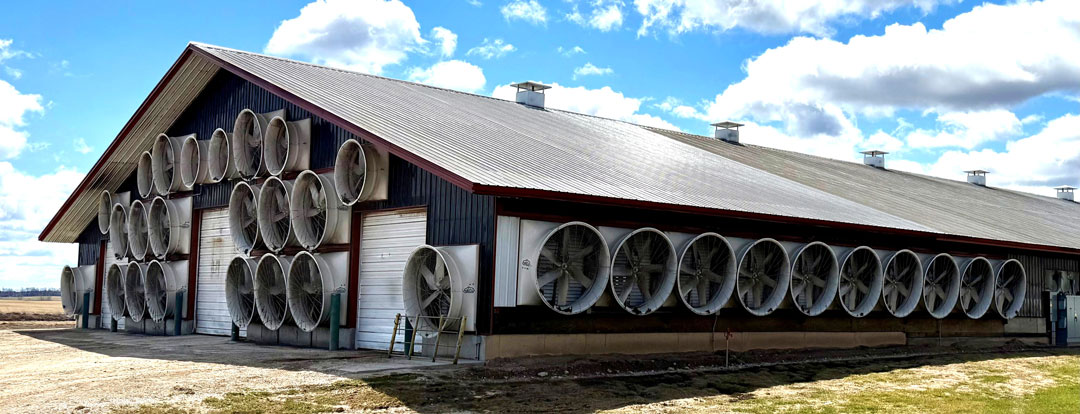
(Photo credit: Neslihan Akdeniz)
Temperature-Humidity Index
The Temperature-Humidity Index (THI) is often used to assess the impact of heat stress on dairy cows [1]:
- THI <68: No stress; normal cow behavior.
- THI 68-72: Mild stress; slight milk yield reduction.
- THI 72-78: Moderate stress; noticeable milk yield reduction.
- THI >78: Severe stress; significant milk yield reduction.
Based on THI data from the past five years in the Madison area, there was an annual average of 83.4 days with no heat stress, 45.6 days with mild heat stress, and 23.2 days with moderate heat stress. Severe heat stress was rare. No severe stress days were recorded from 2020 to 2022, and only two severe heat stress days were observed in both 2023 and 2024.
Economic Impacts
In this study, since the number of severe heat stress days was limited, we assumed that the main impact of heat stress was on milk production and feed intake. Mild, moderate, and severe heat stress were considered to cause 5%, 10%, and 15% reductions in milk production, respectively.
Milk margins vary each year based on the changes in milk prices and feed costs. All milk prices (USD/cwt) and feed costs reported by the Dairy Margin Coverage (DMC) program were obtained from the USDA Farm Service Agency [2]. Milk margins above feed costs were calculated by subtracting the DMC feed costs from the all-milk price. The estimated reductions in milk income over feed costs for the past five years are presented in Table 1.
| 2020 | 2021 | 2022 | 2023 | 2024 | 5-year average |
|---|---|---|---|---|---|
| $41.3 | $16.3 | $38.8 | $23.9 | $48.0 | $48.0 |
costs due to the potential impact of heat stress in the Madison area ($ per cow)
Milk income over feed prices in 2021 was the lowest of the past five years, largely due to global supply chain disruptions caused by the COVID-19 pandemic. The highest milk income was recorded in 2024.
Electricity Costs
Ventilation fan electricity costs were estimated based on the assumption that an airflow rate of 1,000 to 1,500 cfm per cow was needed when ambient temperatures exceeded 20°C. Rural electricity rates were obtained from the US Energy Information Administration. Assuming 16 cfm/Watt fan efficiency, the estimated fan electricity costs per cow are shown in Table 2.
| 2020 | 2021 | 2022 | 2023 | 2024 | 5-year average |
|---|---|---|---|---|---|
| $12.7 | $14.3 | $14.0 | $15.3 | $15.4 | $14.4 |
Comparison of milk production and electricity costs
While electricity costs remain relatively stable, milk margins vary significantly. In years without severe heat stress, depending on milk and feed prices, the potential reduction in milk production due to heat stress may be comparable to the cost of operating ventilation fans.
It is well known that the effects of heat stress extend beyond feed intake and milk production. However, since this study focused on the Madison area, where summers are relatively cooler, we limited our analysis to reductions in milk production and the associated income losses.
The goal of the study was not to quantify the overall economic impact of heat stress, but rather to highlight the importance of properly selecting and maintaining ventilation fans to maximize their benefits. Otherwise, poorly performing ventilation fans could easily reduce the profitability of dairy farms.
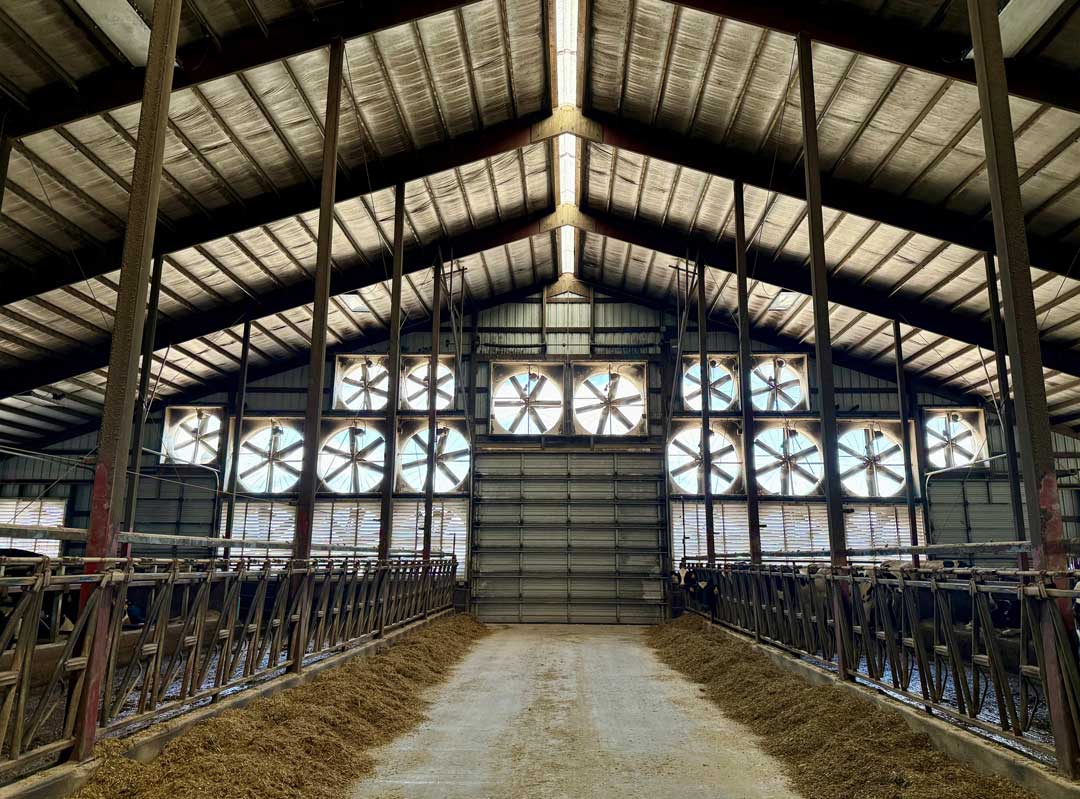
(Photo credit: Neslihan Akdeniz)
When milk income drops, reducing operating costs becomes essential to remain profitable. Following feed costs, one of the main expenses on dairy farms is electricity costs, including ventilation fan electricity costs.
Recommendations to Improve Profitability
Following best management practices in mechanically ventilated barns helps reduce operational costs:
- Choose high-efficiency fans: Fan efficiency significantly impacts electricity costs. Selecting a 15% more efficient fan can save approximately $1,200 per year for a 700-cow operation.
- Size air inlets properly: Small air inlets increase static pressure, reducing fan efficiency. Properly sized air inlets maintain optimal airflow and reduce energy usage.
- Do regular maintenance: Dust and debris on fans decrease efficiency by up to 30%. Regular cleaning (at least once a year) and maintenance ensure fans operate efficiently and economically.
- Use variable-speed fans: Allow seasonal adjustments in airflow rates, reducing energy consumption.
Conclusions
Effective ventilation management reduces the impacts of heat stress on milk production. Although ventilation fans increase electricity costs, selecting the right fans and maintaining them regularly reduce these expenses, helping protect farm profitability amid volatile milk markets and changing climate conditions.
Authors

Neslihan Akdeniz
Livestock Controlled Environments Extension Specialist, Assistant Professor– Mainly focusing on controlled environments for livestock production, also interested in nutrient management and indoor plant-growing facilities.

Leonard Polzin
Dairy Markets and Policy Outreach Specialist – Leonard Polzin serves as a Dairy Markets and Policy Outreach Specialist. His role involves integrating research findings into outreach efforts aimed at agricultural industry stakeholders at both the state and national levels. Leonard’s outreach education programs primarily revolve around dairy markets and policy.
More information about this article
- Akdeniz, N., and Polzin, L. 2025. Ventilation Fans Offset Potential Reductions in Milk Margin. Agriculture, 15, 955. https://doi.org/10.3390/agriculture15090955
References
- Heat Stress in Dairy Cattle: https://extension.umn.edu/dairy-milking-cows/heat-stress-dairy-cattle (6-10-2025).
- [2] Dairy Margin Coverage Program: https://www.fsa.usda.gov/resources/programs/dairy-margin-coverage-program-dmc/prices-updates (6-10-2025).
- [3] Electric Sales, Revenue, and Average Price: https://www.eia.gov/electricity/sales_revenue_price/ (6-10-2025).
Acknowledgment
We are grateful to Charles Nicholson and Brian Holmes for their time and contributions to the development and review of this study.![]()
Download Article


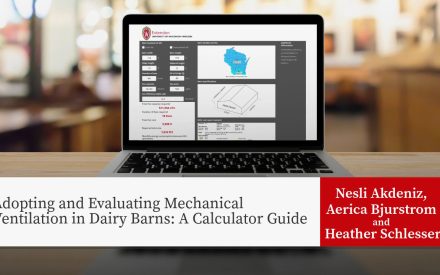 Adopting and Evaluating Mechanical Ventilation in Dairy Barns: A Calculator Guide
Adopting and Evaluating Mechanical Ventilation in Dairy Barns: A Calculator Guide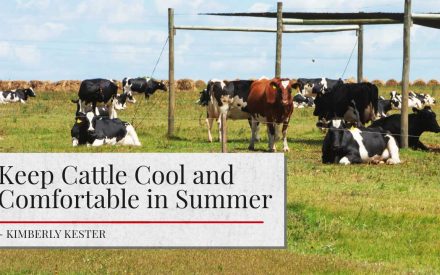 Keep Cattle Cool and Comfortable in Summer
Keep Cattle Cool and Comfortable in Summer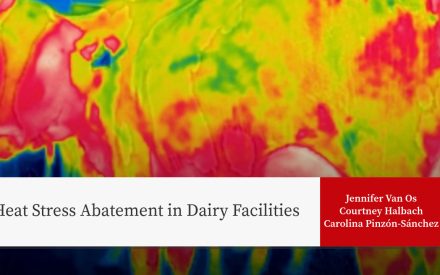 Heat Stress Abatement in Dairy Facilities
Heat Stress Abatement in Dairy Facilities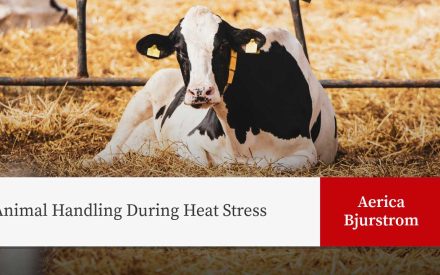 Animal Handling During Heat Stress
Animal Handling During Heat Stress


